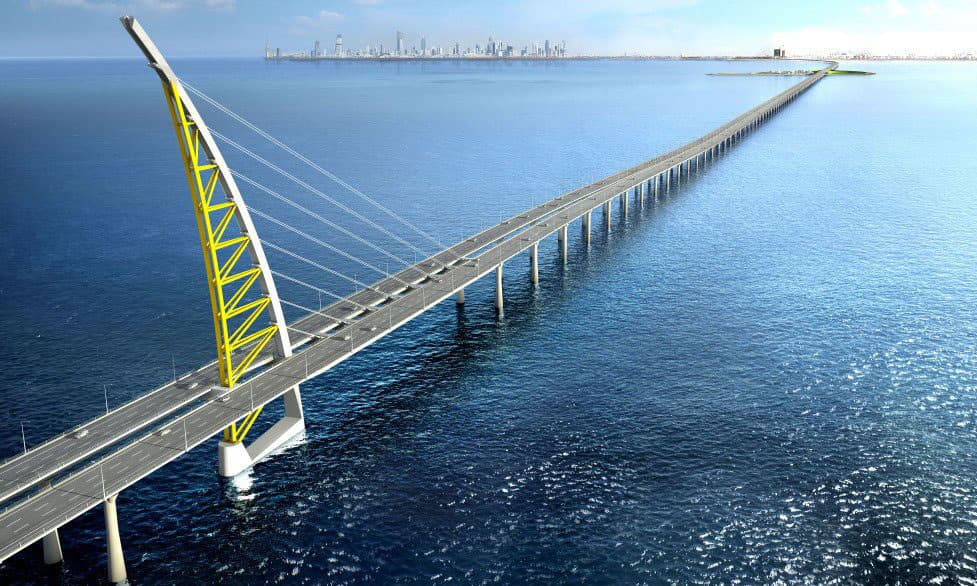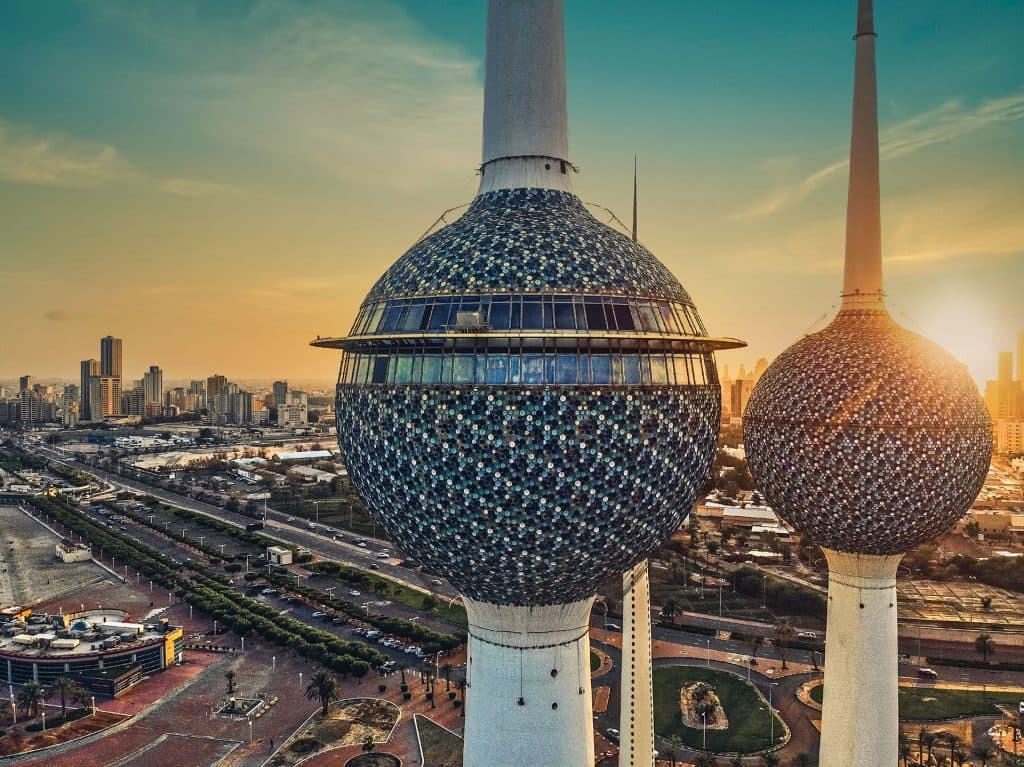
Consider it a contrast in sizes: one of the smallest countries in the world with one of the biggest infrastructure projects in the world.
If all its parts are taken into account, the project is actually the biggest of its kind anywhere.
It is a causeway, and it is located in Kuwait in the northwestern corner of the Arabian Gulf.
Work on the Sheikh Jaber Al-Ahmad Al-Sabah Causeway, as it is called, should be finished in the coming months, the latest milestone having been reached in December with the opening of a section near Kuwait City, the country’s capital, according to the Kuwait News Agency (KUNA), the state news agency.
Commissioned by Kuwait’s Ministry of Public Works, it crosses the Kuwait Bay. By connecting the northern and southern ends of this body of water, it will help reduce traffic congestion along the coastal road by giving motorists an alternative route. It cuts the travel distance to 36 kilometres from 104 kilometres and the average commuting time to 30 minutes from 90 minutes, reads the website of Hyundai Engineering & Construction, the South Korean contractor responsible for the bulk of the project.
A Unique Project
Named after the 13th emir of Kuwait to honour his contribution to the development of the country, the causeway is also expected to encourage people to move out of the crowded capital in the southern end and settle in Subiyah in the northern end where the government plans to invest $86 billion in a development called Madinat al-Hareer, or Silk City, KUNA reports.
When including all its parts, the causeway is nearly 49 kilometres long – about seven kilometres longer than the Haiwan Bridge in Qingdoa, China, making it the longest maritime structure of its kind in the world.
Its parts include the 36.14-kilometre causeway, or Main Link, between Subiyah and the Shuwaikh Port near Kuwait City in the southern end. From the port, another bridge called the Doha Link extends 12.4 kilometres to the Doha highway. Then there are the usual access roads and interchanges that accompany a structure of this size.

The most iconic part of the causeway is a 340-metre cable-stayed bridge on Kuwait Bay, whose cables are set in a pylon shaped like a sail. The main section of the bridge has a sailing space 23 metres high and 120 metres wide to let ships pass underneath.
The causeway, which has three lanes in either direction excluding the emergency lanes, lands on two artificial islands in the middle of the bay that house maintenance and traffic emergency buildings, fuelling stations and marina facilities.
Hyundai says it took the utmost care to preserve the bay’s ecosystem during construction. «We created an alternative habitat that added 1,000 rocks and fish reef blocks to create habitat for green tiger shrimp», it says.
Investing to Modernise
A massive undertaking begun in 2013 at a cost of some $3 billion, the Sheikh Jaber Al-Ahmad Al-Sabah Causeway belongs to a series of projects being pursued by Kuwait to develop and diversify its economy and reduce its reliance on oil and gas. Silk City is another such project. This push to diversify is similar to those being pursued by Saudi Arabia other countries in the region.
Statistics from the Organization of the Petroleum Exporting Countries (OPEC) show just how much these countries are dependent on fossil fuels. In the case of Kuwait, oil and gas make up about 40% of its gross domestic product and about 92% of export revenues.
Kuwait is very small, covering only 17,818 square kilometres. Its population was estimated in 2012 at being 3.2 million, according to state figures.
Before it started exploiting its vast oil and gas reserves, the country hosted a small port known for trade, fishing and pearls.

